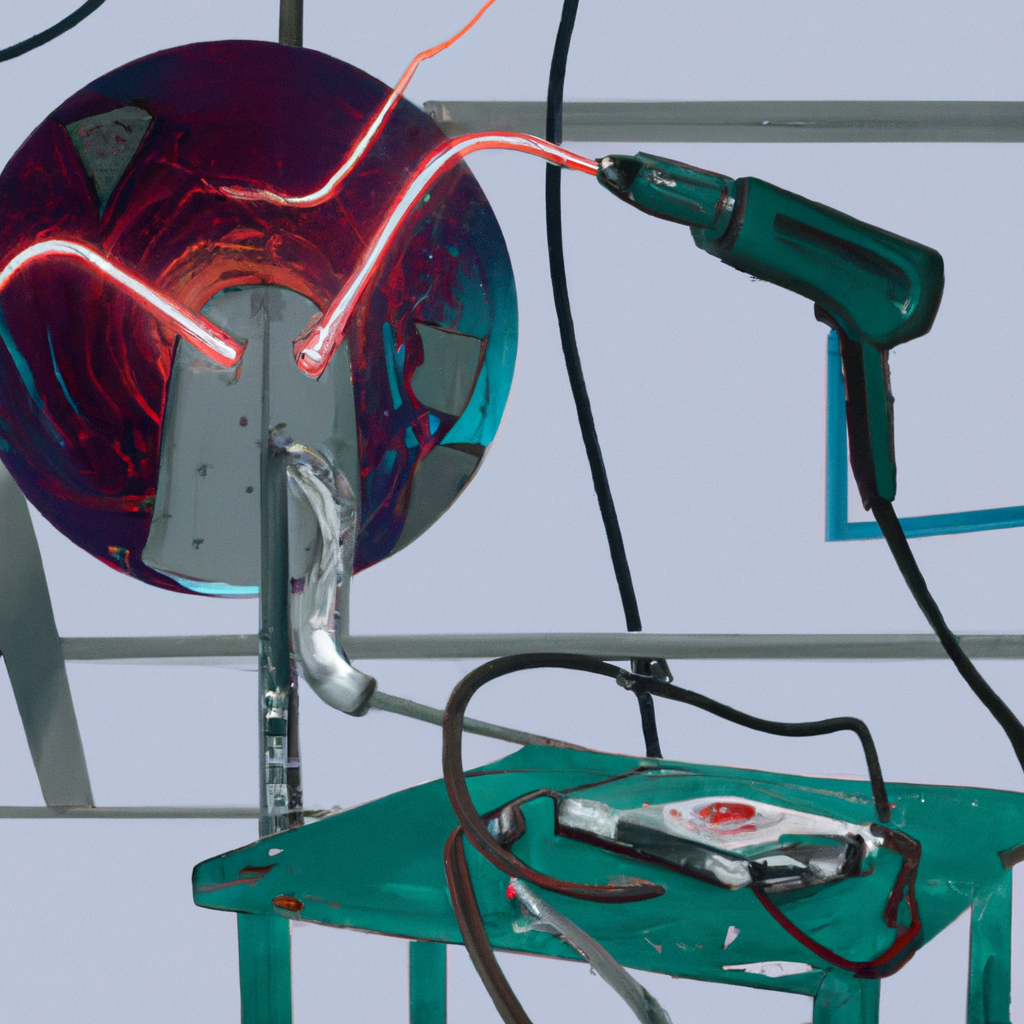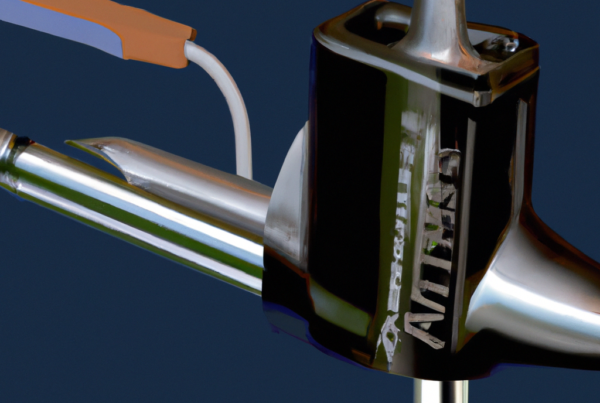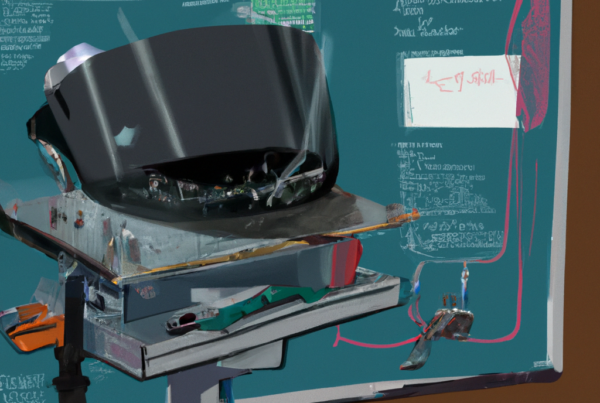Electric welding machines are an essential tool for many industrial and commercial applications. They are used to create strong, durable welds in a variety of materials, such as metal, aluminum, and stainless steel. With a basic understanding of how electric welding machines work, you can appreciate their versatility and effectiveness in a wide range of projects. Electric welding machines create an arc between an electrode and the workpiece material. This arc generates intense heat that melts the material and creates a strong bond. Electric welding machines are available in a variety of sizes and configurations, allowing you to select the best option for the job. With the right machine, you can make perfect welds with minimal effort.

What is an Electric Welding Machine?
An electric welding machine is a device used for welding metal parts, such as pipes, sheet metal, and other components. It consists of a power source, a welding torch, and an electrode, which is connected to the power source. The power source is typically an electric current, such as a generator, a battery, or an alternator. The welding torch is connected to the power source and the electrode is connected to the welding torch.
When the power source is activated, the current is sent through the electrode to the welding torch. This creates an electric arc between the electrode and the metal being welded. The arc causes the metal to melt and form a weld. The weld is then cooled and solidified, forming a strong bond between the two metal pieces.
Electric welding machines can be used for a variety of welding projects, from small repairs to large scale fabrication. Welding machines are available in both arc and MIG/TIG models, depending on the type of welding project being undertaken. Electric welding machines are also used for cutting metal and for welding aluminum.
What are the Components of an Electric Welding Machine?
Electric welding machines are used to join two pieces of metal together by melting them and adding a filler material. The components of an electric welding machine include:
- A power source – The power source is usually an AC or DC generator. This is used to generate the electrical current necessary to heat and melt the metal.
- Welding leads – These are the cables that connect the welding machine to the metal being welded. They conduct the electricity and carry the heat to the welding area.
- Welding torch – The welding torch is used to direct the heat and electricity to the welding area. It is usually made of copper or aluminum and is connected to the welding leads.
- Filler material – This is a metal that is added to the two pieces of metal being welded. It helps to fill any gaps between the pieces and helps to strengthen the weld.
- Welding shield – This is a protective shield that is placed around the welding area to prevent sparks and molten metal from flying out and injuring people.
- Safety gear – Safety gear such as gloves, a helmet, and safety glasses should always be worn when welding to protect the welder from the intense heat and sparks.
How Does an Electric Welding Machine Work?
An electric welding machine uses an electric current to heat and melt two pieces of metal together. The current is passed through electrodes, which are connected to the two pieces of metal. The current creates an arc between the two pieces of metal, which is hot enough to melt the metals together. Once the metals have cooled, they are fused together to create a strong bond.
The electric welding machine includes an adjustable power source, which is used to control the temperature of the weld. The machine also includes a safety switch, which turns off the power source if the weld becomes too hot. The machine also includes a flow meter, which measures the amount of current passing through the electrodes.
Electric welding machines can be used to join all kinds of metals, including steel, aluminum, and copper. The machine can also be used to create other shapes, such as curves and circles. Electric welding machines are often used in automotive, construction, and fabrication industries.
What are the Variables Involved in Electric Welding Machine Operation?
Electric welding machines involve a few different variables in order to operate properly. The primary variable is the type of welding being performed. This includes the type of metal being welded, the thickness of the metal, and the type of welding process being used. Other variables include the welding current, the welding voltage, the arc length, the welding speed, and the arc gap.
The welding current is the amount of current that passes through the electrode and the workpiece. This is measured in amperes. The welding voltage is the amount of force used to push the electric current through the electrode and the metal being welded. This is measured in volts. The arc length is the distance between the electrode and the workpiece. The welding speed is the rate at which the electrode is moved over the metal. The arc gap is the distance between the electrode and the metal. All of these variables need to be set correctly in order for the welding process to be successful.
The welding machine also needs to be properly set up and maintained. This includes ensuring that the correct welding consumables are being used, such as the right type and size of electrode, and that the machine is set up according to the manufacturer’s specifications. The welding machine also needs to be checked regularly for signs of wear and tear, and the consumables need to be replaced as needed.
What is the Process of Electric Welding?
Electric welding is a process by which two pieces of metal are joined together with the application of heat. The process involves the use of an electric welding machine and specialized welding rods. The electric welding machine’s job is to produce an electrical arc between the two pieces of metal. This arc produces enough heat to melt the metal and create a weld.
To begin the process, the two pieces of metal are placed together and the welding machine is set up. The welding rod is then placed between the two pieces of metal and the welding machine is turned on. The electric current then flows through the welding rod, creating an arc. The heat from the arc melts the metal, fusing the two pieces of metal together.
Once the pieces of metal are welded together, the machine is turned off and the weld is allowed to cool. The weld is then inspected to make sure that it is strong enough to hold the two pieces of metal together. If the weld is weak, the process can be repeated or the weld can be reinforced with additional layers.
Electric welding is a popular choice for many industrial applications due to its relative simplicity and cost-effectiveness. The process can be used to join together a variety of metals and is used in a wide range of industries, from automotive repair to aerospace engineering.
What Safety Precautions Should be Taken When Using an Electric Welding Machine?
When using an electric welding machine, safety is of the utmost importance. Here are some safety precautions to consider:
Always wear the appropriate safety gear, such as eye protection, a welding helmet, welding gloves, and long sleeves and pants. Ensure that all protective gear is in good condition; replace any damaged items before using the machine.
Make sure the welding area is well ventilated and free from combustible materials, such as paper, chemicals, and solvents. Ensure the area is clear of any bystanders, as sparks and molten metal can cause serious injury.
Check the welding machine and cables for any damage, and ensure they are properly connected. Make sure the welding machine is set to the correct voltage and amperage for the job.
Turn off the welding machine before making any adjustments or repairs. Unplug the machine when not in use.
Monitor the welding machine for overheating or sparks that indicate a short circuit. If either occurs, shut off the machine and have it inspected by a qualified technician.
Never leave the welding machine unattended while it is in use. Always be aware of your surroundings and keep your hands and any other body parts away from the arc area.
Always keep a fire extinguisher nearby in case of an emergency. Never attempt to extinguish a welding fire with water.
What are the Different Types of Electric Welding?
Electric welding is a process used to permanently join two pieces of metal. It is different from other welding processes because it uses electricity as a source of heat. Electric welding has several different types, including arc welding, spot welding, and resistance welding.
Arc welding is the most common type of electric welding. It uses an electric arc to create heat, which melts the metal and allows the pieces to fuse together. It is often used for larger projects, such as welding large pieces of steel together. It is also used to weld aluminum, stainless steel, and other metals.
Spot welding is a type of electric welding that uses two electrodes to apply heat to the metal. This creates a spot of intense heat that melts the metal, allowing the pieces to join together. This type of welding is often used for thinner metals, such as car parts and sheet metal.
Resistance welding is a type of electric welding that uses two electrodes to generate heat through resistance. The heat melts the metal, allowing the pieces to join together. This type of welding is used for a variety of materials, including copper, brass, and aluminum.
Electric welding is a versatile and efficient form of welding that can be used on a wide variety of materials and applications. Each type of electric welding has its own advantages and disadvantages, so it is important to choose the type of welding that best meets your needs.
What are the Benefits of Electric Welding?
Electric welding offers various advantages, including increased welding speeds, improved welding quality, and reduced labor costs. It is also more efficient than traditional welding because it does not require the use of a gas torch and is easier to control. Electric welding can be used to join a variety of metals, including aluminum, steel, and stainless steel.
The process of electric welding works by using an electric current to generate heat. This heat melts the metals, allowing them to be fused together. The current passes through a welding machine, which contains electrodes that are attached to the metals to be welded. The electric current then passes through the electrodes and creates an electric arc, which melts the metals and allows them to be fused together.
Electric welding is a cost-effective and efficient way to join metals, and it is often used in many different manufacturing and repair applications. The process is also safer than traditional welding, as there is no risk of fire or explosions.
What are the Limitations of Electric Welding?
Electric welding can be extremely helpful for many different projects, but there are a few limitations that should be considered.
One limitation is the cost of electricity. Electric welding machines can be expensive, and the cost of electricity will add up over time. Additionally, electric welders require a significant amount of power to operate, and may require a dedicated power supply.
Electric welders are limited in the types of metals that they can weld. Most electric welders are designed to weld only ferrous metals, such as steel, iron, and aluminum. They are not suitable for welding non-ferrous metals, such as copper, brass, and stainless steel.
Electric welders are also limited in the thickness of the material they can weld. Generally, electric welders are not suitable for welding materials thicker than 1/4 of an inch. For thicker materials, alternative welding methods, such as oxy-acetylene welding, must be used.
Finally, electric welders create a lot of heat and can be dangerous if not used correctly. Safety precautions, such as wearing protective clothing and using safety goggles, must be followed when using an electric welder.
How Can I Troubleshoot Problems with an Electric Welding Machine?
There are a few common issues that can affect an electric welding machine. First, check the power source and make sure it is providing the right amount of electricity. If it is not, the machine may not produce a strong enough weld. Additionally, check that the welding gun is properly connected to the machine and that the wire feed is working correctly.
Next, inspect the welding tip to make sure it is in good condition. If the tip is damaged or worn, it will not be able to generate the necessary heat to create strong welds. Lastly, check the settings on the machine and make sure the voltage, amperage, and speed are all set correctly.
If problems persist, it may be necessary to consult an experienced technician to diagnose and repair the machine. Additionally, always make sure to use the welding machine in a safe environment and to wear appropriate safety gear when operating.



